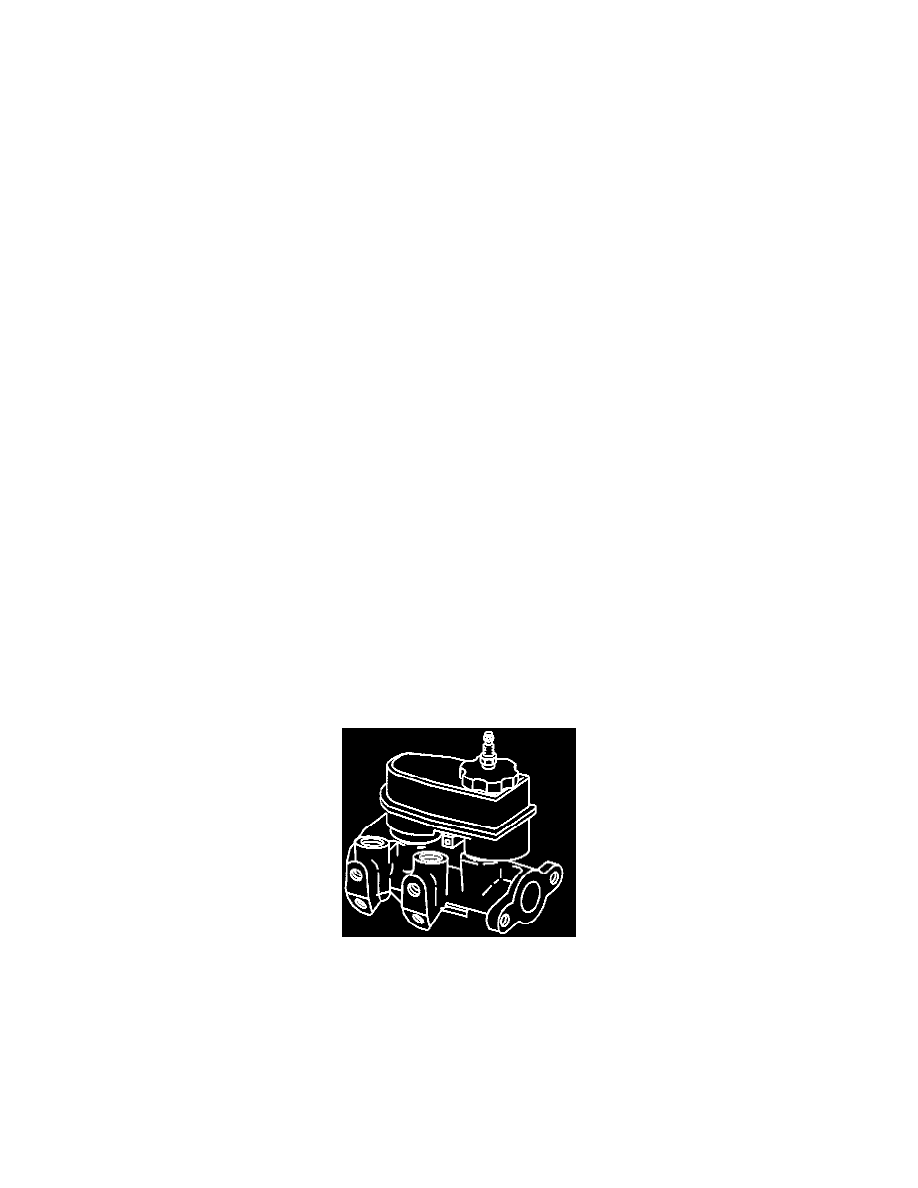Regal V6-3.8L VIN K (1997)

Brake Bleeding: Service and Repair
Hydraulic System Flushing
Description
NOTE
^
If evidence of contamination is present in the vehicle's brake fluid, the entire brake system must be flushed following one of the procedures
outlined below.
^
The system must be flushed if there is any doubt about the condition of fluid in the system or if fluid has been used which contains the slightest
trace of mineral oil (from such things as engine oil, transmission fluid, etc.).
^
After flushing the entire brake system, all rubber components must be replaced. Components which must be replaced include: brake hose
assemblies, master cylinder rubber parts, brake caliper and wheel cylinder boots and seals, brake modulator, and brake solenoid valves.
^
After all rubber components have been replaced, the entire brake system must be re-flushed following one of the procedures outlined below.
^
Once the second flushing procedure has been performed, a complete system bleed must be performed.
CAUTION:
^
Use only SUPREME 11 or equivalent DOT 3 brake fluid from a clean, sealed container. Do not use fluid from an open container that may be
contaminated with water. Improper or contaminated fluid could result in damage to components, or loss of braking, with possible personal injury.
^
Overfilling the reservoir must be avoided due to the potential for overflow onto the nearby catalytic converters in the exhaust system. Brake fluid
is flammable, and contact with hot exhaust components could result in a fire and possible personal injury.
Pressure Flushing
PRESSURE FLUSHING TOOLS REQUIRED:
J 29532 Diaphragm Type Brake Bleeder J 35589 Compact Brake Bleeder Adapter
NOTE: Pressure bleeding equipment can be used to perform the flush procedure. The pressure bleeding equipment used for flushing must be of
the diaphragm type. It must have a rubber diaphragm between the air supply and the brake fluid to prevent air, moisture, and other contaminants
from entering the hydraulic system.
PROCEDURE
1. Clean brake fluid reservoir cover and surrounding area.
2. Remove brake fluid reservoir cover.
3. Remove any remaining brake fluid in reservoir.
4. Refill brake fluid reservoir with clean DOT 3 brake fluid to proper level.
5. Install Bleeder adapter J 35589 to brake fluid reservoir.
6. Install Bleeder adapter J 35589 to pressure bleeding equipment.
A. Adjust pressure bleeding equipment to 35 to 70 kPa (5 to 10 psi) and wait for approximately 30 seconds to ensure there is no leakage.
B. Adjust pressure bleed equipment to 205 to 240 kPa (30 to 35 psi).
7. Proceed as follows with pressure bleeding equipment connected and pressurized:
A. Attach a clear plastic hose to the rearward bleeder valve on the brake modulator. Place the other end of the hose in a container to collect
draining brake fluid. Do not submerge hose end into fluid.
B. Slowly open bleeder valve and allow fluid to flow until clean brake fluid flows or until at least 118 ml (4 ounces) of fluid is accumulated.
C. Close valve.
D. Repeat above procedure for the forward bleeder valve until clean brake fluid flows or until at least 118 ml (4 ounces) of fluid is accumulated.
^
Tighten ABS brake modulator bleeder valves to 9 Nm (80 inch lbs.).
